The Eternal Message of Vedanta
During his famous address at the World Parliament of Religions held in Chicago in America in September, 1893, Swami Vivekananda addressed the gathering as ‘children of immortal bliss’—amritasya putrah—a term taken from the Shvetashvatara Upanishad (2,5). The audience of more than 5000 was speechless and spellbound with his message of hope and universality.
Swami Vivekananda was a man of profound spiritual experiences . It is the strength of this realization that deeply touched the innermost chords of the audience. His address emphasized the ‘state of oneness’ as the origin and destination of the entire human race, irrespective of its growing diversity in ethnicity, race, colour, religion or language. His message echoed the wisdom of the ancient Indian scriptures—the Vedas and Upanishads. Swami Vivekananda reiterated the Vedic concept of the immortality of the soul and the oneness of human existence.
This idea of oneness of existence, which Swamiji proclaimed, is derived from the ‘Listen, You Children of Immortal Bliss’ SHYAMALI GHOSH Hindu scriptural literature—the Upanishads. The great ancient seers and sages of India acquired the divine truths in their superconscious state of meditation and delivered the wisdom to posterity through the Shruti and Samhita literature. Today their thoughts and teachings pertaining to all fields of science, society, politics, and above all philosophy, are being investigated and revalidated by physical scientists and philosophers alike. Besides, Vedanta has scientific, philosophical, and experiential foundations which we need to reflect. This is essential to understand the human journey towards its coveted spiritual destination of oneness as the ‘children of eternal bliss’—amritasya putrah.
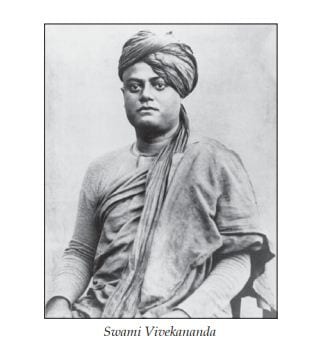
Vedanta philosophy influenced the thoughts of many famous western scientists like Einstein, Oppenheimer, Erwin Schrödinger, Wigner and many more. Vedanta literature is vast and many erudite scholars have put forward interpretations of each and every verse in this vast body of literature. The modern day annals of such quests (to ‘oneness’) are exemplified in the Godintoxicated lives of Sri Ramakrishna, Holy Mother Sarada Devi and Swami Vivekananda and many other great mystics the world over.
Man’s Uniqueness
Human race is accepted as the most evolved species. It is so because of ‘their evolved minds’ which have the power to think, analyze, and contemplate. No other living species is gifted with the faculty of multi-dimensional thinking. Human beings have a physical existence limited by the body and a causal existence beyond. This has been accepted by philosophers and scientists from both the east and the west since ancient times.
Pure science uses modern technology and analyzes all natural phenomena of the universe which includes everything that is living or non-living. It seeks answers about their existence, their origin, and their destination at the sensory level.
On the other hand, philosophical and metaphysical thoughts probe the same questions inwardly by delving deep within the human mind and spirit. Hence science and philosophy can be considered to be two parallel and complementary methods of study. Interactively, they offer us insights on the total (physical and causal) identity of human beings.
The Idea of Vijnana
The Sanskrit word Vijnana means an intense search for knowledge—physical as well as metaphysical. It is a continuing search for truth that never stagnates. This search is always for ‘more’, for something new which has not been achieved at that point of time; it is the search for the Eternal, the Vast Reality. The Chandogya Upanishad (7.23.1) says, ‘yo vai bhuma tat sukham, nalpe sukhamasti—‘There is no happiness in the small; only in the Vast One there is [eternal] happiness.’ Hence this search has no boundary. It keeps enlarging its reach to bigger and broader phenomena starting with earthly objects. It extends to the cosmos, or deeper to the molecular level of all objects and beings, including probing into the innermost core of the human mind and soul.
This extraordinary thirst has led both scientists and philosophers to continue to make amazing discoveries centering on human life and the human condition. For example, it led the pure scientists to discover the facts about the distant planets, stars, galaxies many million light years away, their beginnings and their deaths, about the mysteries in all the objects on the planet earth whether at the top of the highest mountains or in the unfathomable depths of the oceans.
Resolving the Old Conflict
In the winter of 1895-96, Swami Vivekananda asked Nikola Tesla—the well-known scientist—at Sarah Bernhart’s party whether he could prove mathematically that matter is the same as potential energy. Swamiji believed that if this could be scientifically proven then ‘Vedantic cosmology will be placed on the surest of foundations.’ Tesla could not provide the answer at that point of time. However, ten years later in 1905, Albert Einstein, a young man in his mid-twenties, published five extraordinary papers which were forerunners of the theory of Relativity. Though Swami Vivekananda did not live to see this extraordinary discovery, it removed some conflicts between scientific theory and Vedanta philosophy for the first time.
The fascinating development is that scientists are now turning inward, trying to seek answers from the fields of metaphysics and western and eastern philosophical thought, primarily Vedanta philosophy.
According to the findings of the physical sciences, all objects can be broken down to the common molecular, atomic and subatomic units of electron, proton, and neutrons and even further to smaller fundamental particles. From the lowest virus to the highest homo sapiens, all have a guiding core of DNA, the guiding unit of life.
Coming to humans, we find that in spite of being made of the same basic units, they appear to be quite diverse. They differ in respect of looks, habits, and mental make-ups even if they are born as twins. This diversity is a fundamental law of nature and includes everything in its fold. The huge prehistoric animals, plodding the earth for many millions of years, gradually became extinct leaving the ground to the more fit species that could adapt better to the environment. All the while there was a general shrinkage in size; shrinkage in the ratio of body to brain mass. As the relative size of the brain increased, the reflective and analytical power heightened and so did the chance of their survival. Today’s modern flora and fauna have come about through a journey of many billions of years of evolution.
The biological ancestors of modern humans, the homo sapiens (means ‘wise men’ in Latin), inhabited this earth as far back as 3-4 million years BCE. This has been verified by the discovery of Ardi, believed to have existed 4.4 million BCE and Lucy, 3.2 million BCE. By looking at the simplified timeline structure of that development we realize that it has taken the human race almost four million years to reach it’s present stage of development.
In spite of so much alikeness, why and how each human being differs from one another is still a mystery at the molecular level. Biologists are yet to find clear answers. The facts as to why the two opposite sexes differ so much at the mental, psychological, or at the social levels, are also subjects of intensive modern research. It is being clearly revealed that subtle controls exist at the molecular levels to cause such variances.
Discovering Oneness
The quest for something everlasting, and perhaps a tangible experience, dwelling on the meaning and purpose of human existence on earth started more than 5000 years ago simultaneously in different parts of the eastern world. The search for the unknown in the physical, metaphysical, and philosophical domains is an innate urge of the human mind irrespective of time, place, race, or country.
The Vedas and the Upanishads which date back approximately to 3500 years before the Christian era (with the help of more current discoveries of artifacts, it is being pushed to 6000 BCE) constitute the bedrock of Hindu philosophy. They deal with eternal queries of the human mind as to their origin, identity, and ultimate destiny.
Hindu philosophy does not accept the scientific concept that death is the cessation of the individual. It proclaims that the soul with its innate spark of divinity continues or may continue its onward journey even after the demise of one’s physical body. The soul is thought to be wrapped in layers of karma or samskara (impressions of past actions) which continue to accumulate or diminish as we pass from one birth to another.
The soul in itself is pure, sublime, and without any attribute. It wears these diverse garbs (of samskara) which makes each one of us look different, act in a different manner and experience different destinies. The cycles of births compel the individual soul to travel through different paths in each birth. Thus, with each rebirth, it accumulates or works on varied experiences, both good and bad.
The eternal urge of the soul is to attain the supreme liberation and it tries to evolve from the lower to the higher states of consciousness, just as a student is promoted from the kindergarten to the university levels. The course of this journey of the soul also involves the play of the free will (purushakâra), predestination (prarabdha) and divine grace. These ongoing cycles of reincarnation continue until the soul is completely stripped of all the adhering layers of karma. It finally merges with Brahman or Paramâtman to become one with the unlimited powerhouse of bliss, and achieves the eternal oneness and immortality.
In the light of this theory of essential oneness, it is really a misconception on our part to think that we are inherently different from one another. The veil of Maya causes this illusion and we accept it as true. The Brahman pervades all living beings and inanimate objects in spite of differences in appearances. The Upanishads proclaim that the Brahman is like a full circle. It is eternally whole and complete, having neither a beginning nor an end. Hence Brahman can neither be increased by addition of anything nor can it be diminished by taking away any part from it. This is the essence of the well-known Shanti Mantra found in many Upanishads:
Om purnamadah purnamidam purnat purnam udachyate Purnasya,
purnamadaya purnameva avasishyatey. Om shantih shantih shantih ||
That is whole; this is whole; from that whole this whole came;
From that whole, this whole removed, what remains is whole. Om, Peace, peace, peace.
Inner Investigation
The great Rishis did not have access to our modern science and technology. They investigated the same questions as the scientists by delving into the depths of the multi-layered human mind, which became their principal search engine. Their techniques of yoga, introspection, meditation, along with their razor sharp intellect allowed them to reach deep into the subtle mental spheres.
The conceptions of soul, its immortality, reincarnation and that of an all-encompassing Brahman or Paramatman, were their unique contributions to the world of philosophy. On the basis of the knowledge acquired by direct realization, they announced to the world that human beings are amritasya putrah or children of immortal bliss, which sounds as a universal message of grand hope. This ‘all-inclusive’ philosophy transcends secular worldly knowledge and helps us to get a unified vision of the cosmos in its entirety. It explains the causes behind the physical variety of natural phenomena, including the diversity among human beings.
The word bliss entails much more than its dictionary meaning. This bliss is something impersonal, relative, and an evolving experience until it becomes allencompassing and immortal. It is independent of the object of reference and its surroundings.
According to Swami Vivekananda, life is a journey from lower to higher truths or from one state of being to the next. Whichever step of this eternal journey we are in at the present time, it seems to be true for that particular moment. In a similar way, the state of bliss is also relative. From a scientific perspective, it echoes the Heisenberg uncertainty principle, one of the fundamental bases of quantum physics. The theory states that for an atomic or subatomic particle, its position and momentum cannot be determined with accuracy at the same time.
As one’s soul ascends to the next higher stage of the journey, the corresponding truth changes and so does the nature of bliss. This long journey of the soul becomes complete when it merges with the supreme soul or Brahman. At this stage the outer world does not affect the mind or the soul as all are subsumed within the whole circle or Brahman, and therefore there is nothing left to relate to. In other words, the knower, known and knowable, all three merge into a state of undifferentiated ‘oneness.’ Sri Ramakrishna poetically called this as merging of the salt doll which had gone into the ocean to measure its depth.’ This ultimate realization allows the person to live in the physical world, but remain untouched by the trappings of his physical surroundings. Sri Ramakrishna’s life was a perfect example of such bliss.
In Swamiji’s words,
The omnipresent God of the universe cannot be seen until He is reflected by the giant lamps of the earth: the Prophets, the Man-Gods, the Incarnations, the embodiments of God.
This holds true for all times past, present or future and exemplifies the veracity of the idea of amritasya putrah.
This unique realization was a direct result of his close association with Sri Ramakrishna. Swamiji proclaimed to the world that Sri Ramakrishna was LOVE personified. His love was all encompassing and there was no discrimination based on status, religion, or any other aspect. To me, this all inclusive, unbounded love stands as an example of the ‘real godliness’ in the present world of conflicts and differences, and it leads one to the vision of ‘eternal oneness’ in everything (sarvam khalvidam brahma).
Shining Examples of the Holy Trio
In studying the lives of Sri Ramakrishna and Holy Mother Sri Sarada Devi we note the inherent simplicity in all actions in their daily lives, exemplifying the highest divine truths. In their everyday life they elevated themselves above the mundane smallness of our daily existence. They did not reject the material needs but showed how one may rise above such needs. They accepted all beings, low and high, with the same love. Their minds dwelt constantly in the spiritual plane. They transcended the barrier between the material and the spiritual and could also elevate others to a level of the highest consciousness by a mere touch or a look.
They practised and demonstrated in their lives the principles of the highest philosophical texts of the world while living in the company of worldly beings and behaving just as one of them. Just to be present in their godly company gave people an opportunity to have a foretaste of the ‘eternal bliss’. So also the life of Swami Vivekananda is an ideal example of universal integration and ‘oneness’. His outlook was one of acceptance (as in the case of embracing all aspects of life), unification (of sacred and secular), and harmonization (every religion is true).
In the closing sentence of his lecture on the 1st day of the Parliament of Religions in Chicago in 1893, Swami Vivekananda said, ‘I am proud to represent a religion in whose ancient language it is not possible to translate the word exclusion.’ The journey through birth, life, death, and rebirth is a continuum and it does not seek exclusion but accepts everything, every being, and every happening, good or bad, into its fold until it reverts back to its source of bliss. Swami Vivekananda declared that religion is a question of being and becoming and not of believing. ‘His was an all-inclusive vision—every aspect of (his) life was an illustration of a spiritual ideal waiting to be recognized, divinity manifesting’.
Assertion of Divinity
We have discussed aspects of ‘immortality’ and ‘oneness’ of human existence from the scientific and philosophical perspectives, emphasizing Vedanta and lives of the holy trinity of Sri Ramakrishna, Sri Sarada Devi and Swami Vivekananda. It is also seen that in parallal, physical science establishes the basic pillars of unity in modern human beings in the form of correct alignment of 3 billion base pairs in their DNA. This discovery is one of the greatest leaps in the biological researches and has led us to the common genetic makeup of the entire human race while emphasizing diversity at the molecular level.
Vedanta asserts that all beings, living or inanimate, have in them a spark of divinity. This truth prompted the Rishis from time immemorial to address human beings as amritasya putrah or ‘children of immortal bliss’.
For each individual, this tiny spark is packaged differently on the outer plane of existence aligned with their accumulated experiences (past karmas or samskaras) from previous births. These differences in the samskara cause the basic differences between two individuals (at the physical, mental and spiritual levels). After many reincarnations or rebirths, the divine spark in the soul is freed of all bondages of karma and samskara. It thus transcends the veil of Maya or illusion and merges into eternal oneness with the Brahman just as different streams having different sources ultimately mingle into the sea.
According to the eastern philosophical interpretations of life, the entire human race is alike at the level of object or Jada (translates as inert, lifeless) as has been proven by the genome project. But we differ (even between the two nearest copies like the homo zygotic twins) at the higher level of Chit or consciousness revealing the play of karma and samskara. Thus, reconciliation is achieved between the scientific and the philosophical thoughts on the concept of attaining the state of ‘oneness’.
Conclusion
The message of ‘oneness’ and eternal harmony is best explained and sustained through the philosophical concepts of the Vedas and Upanishads, and is illustrated for mankind at large, and particularly for the ordinary householders through the lives of the Sri Ramakrishna, Sri Sarada Devi and Swami Vivekananda. This ‘oneness’ is actually attainable in one’s lifetime by awakening one’s eternal identity as ‘a child of immortal bliss’ or amritasya putrah, and treating others as one’s very own. This nature of thought brings promise and hope to humanity and to the entire universe.
To conclude in Swamiji’s words, ‘As in business, everyone can achieve something in spirituality, whoever embarks on it.’ Spiritual life is within our reach if we choose to realize our innate spiritual identity.
Select Bibliography
- The Complete Works of Swami Vivekananda in nine volumes
- The Gospel of Sri Ramakrishna recorded by ‘M’, tr. by Swami Nikhilananda
- ‘Vedanta And The 21st Century: Reality In Vedanta And Science’, in Folks Magazine by N S Rajaram
- ‘Sarvepalli Radhakrishnan and Human Solidarity’ by Ramin Jahanbegloo in Spirit of India
- Nikola Tesla: The Genius Who Lit the World by Dr. Ljubo Vujovic
- Sarah: The Life of Sarah Bernhardt (Jewish Lives) by Robert Gottlieb
- Political Thought by Urmila Sharma and S.K. Sharma
- Britannica Concise Encyclopedia
Source : Vedanta Kesari, March, 2016

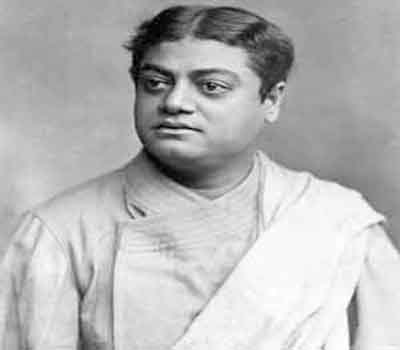
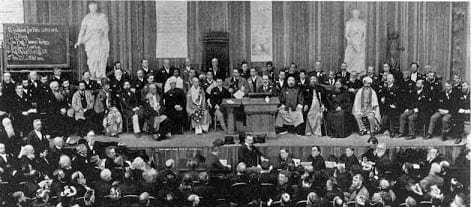

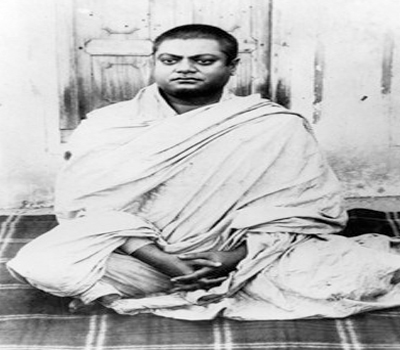
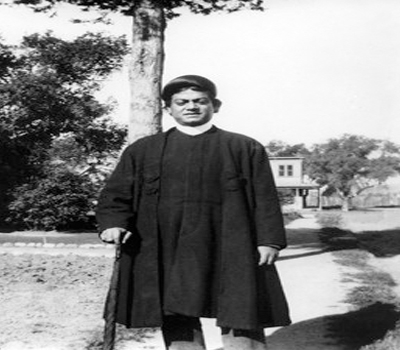
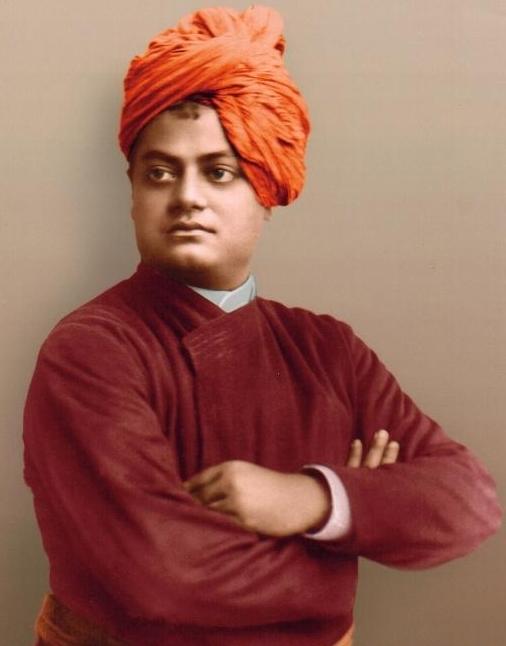
Leave A Comment